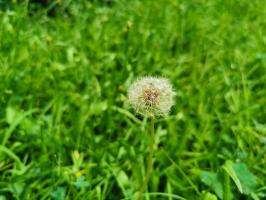What is a Swiss Cheese Plant?
A Swiss cheese plant, also known as the Monstera deliciosa, is a popular indoor plant that is well-known for its large, glossy leaves that have holes punctuated throughout the surface. It is a native plant of the rainforests of Central and South America, and is a member of the Araceae family. In recent years, this beautiful plant has gained popularity as a decorative item in homes and offices due to its aesthetic appeal.
How to Propagate a Swiss Cheese Plant
Whether you want to create a new plant or simply cultivate the one you already have, propagating your Swiss cheese plant is an easy and rewarding process. Here are three steps you can follow:
1. Choose the Right Stem
Before you begin the propagation process, choose a healthy stem from the mother plant that has several leaves on it. It is best to select a stem that is at least 12 inches long and has an aerial root or two already present.
2. Cut and Prepare the Stem
Using a clean pair of scissors or pruning shears, cut the stem close to the base of the mother plant. Next, remove any leaves and aerial roots from the bottom half of the stem. This will create a bare section that can be inserted into a potting mix. If you want to speed up the rooting process, you can dip the cut end of the stem in rooting hormone powder.
3. Plant the Stem
Fill a pot with a mixture of potting soil and perlite, creating a well-draining soil that is suitable for the Swiss cheese plant. Water the soil well, and then insert the stem into the soil until the first set of leaves are just above the surface. Firm the soil around the stem to hold it in place, and then water the soil lightly. Overwatering can cause the stem to rot, so make sure that the soil is moist but not overly wet.
Caring for Your New Swiss Cheese Plant
Once the stem has been planted and is showing signs of growth, it is important to take care of it carefully to ensure that it thrives. Here are a few tips to help you care for your new Swiss cheese plant:
1. Find the Right Spot
Place your Swiss cheese plant in a location with bright, indirect sunlight. A location near a window that gets indirect sunlight is perfect. Direct sunlight can scorch the leaves and cause them to turn brown.
2. Watering
Swiss cheese plants like to be kept moist, but not soaking wet. Wait until the top layer of soil is dry to the touch, and then water the plant deeply. In the winter months, when the plant isn't growing as actively, you can reduce the amount of water you give it.
3. Fertilizing
Feed your Swiss cheese plant once a month with a general-purpose fertilizer during the spring and summer months. During the winter months, reduce the amount of fertilizer you give your plant.
The Benefits of Propagating Your Swiss Cheese Plant
There are many benefits to propagating your Swiss cheese plant. Not only will it allow you to create new plants for your home or office, but it can also help to invigorate the mother plant, leading to new growth and a healthier plant overall. Additionally, propagating the Swiss cheese plant is an easy process that is perfect for beginner gardeners.
In conclusion, propagating a Swiss cheese plant is an easy and rewarding process that can help you create new plants and invigorate the mother plant. By following the simple steps outlined in this article, you'll be on your way to a thriving and beautiful Swiss cheese plant in no time.

 how many times do yo...
how many times do yo... how many planted tre...
how many planted tre... how many pine trees ...
how many pine trees ... how many pecan trees...
how many pecan trees... how many plants comp...
how many plants comp... how many plants can ...
how many plants can ... how many plants and ...
how many plants and ... how many pepper plan...
how many pepper plan...
































